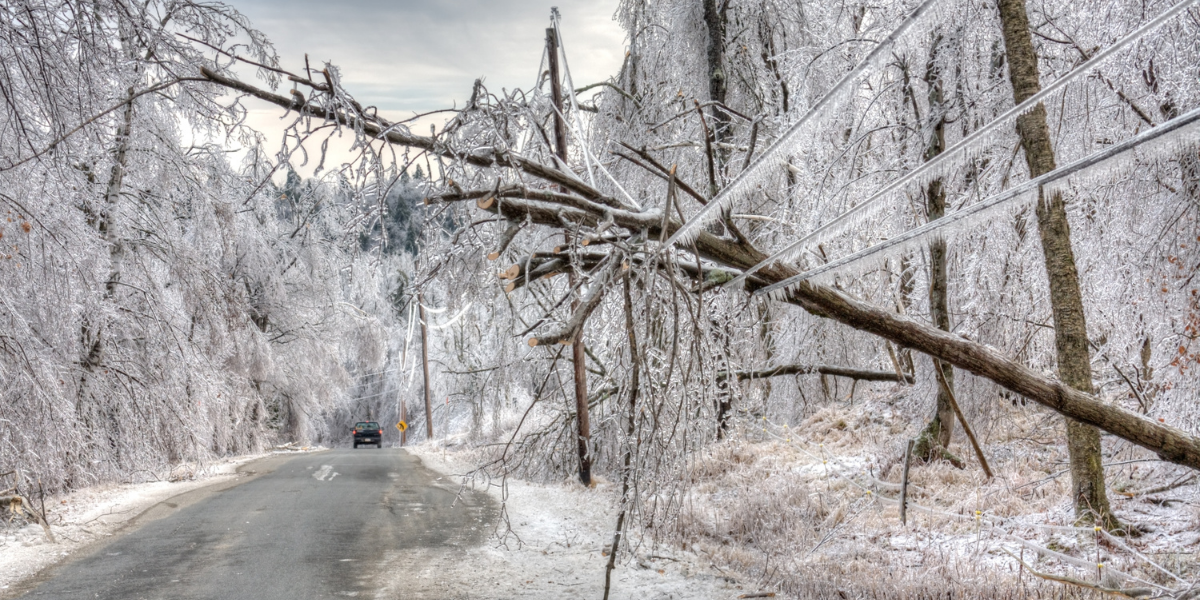Navigating Disaster with FHLBank Indianapolis' Disaster Relief Program
last updated on Wednesday, October 15, 2025 in Affordable Housing
When disaster strikes — whether an ice storm, a tornado, a flood — and the day-to-day systems that keep our lives and communities running are not equipped to handle the circumstances, where do you turn?
When emergency funding becomes available, post-disaster conditions often create challenges in administering and accessing financial support. The question then becomes: How do we activate? How can our systems, and particularly our financial institutions, move quickly to access available resources, shore up community response and mitigate the worst effects of damage and disaster?
Thanks to the Disaster Relief Program at FHLBank Indianapolis, one community credit union rose to the occasion, stood up new processes and showed up for their community after winter ice storms devastated parts of Northern Michigan and the Upper Peninsula earlier this year. Read on to see how.

The background
In late March, Northern Michigan residents experienced several days of severe ice storms and winter weather that caused extensive damage, including widespread power outages, loss of telephone and cellular service and impassable roads as a result of downed trees and debris.
As Matt Nahan, executive director of Community Financial Credit Union’s Relentless Care Foundation, describes it, “The very identity of folks in Northeast Michigan [was] taken away as millions of acres of pine forests are just gone.”
Both state and federal governments made disaster declarations, which can mobilize response and make funding streams available to support recovery efforts, but what can a community do when insurance claims and state and federal support don’t cover all the damage? When new resources are available, how do communities access them?
The response
Enter Community Financial and the Relentless Care Foundation. To say Community Financial earns their name might be an understatement. As Nahan explains, “The Relentless Care Foundation is the charitable arm of Community Financial Credit Union, and we're focused on putting housing within reach for Michiganders.” In addition to Community Financial’s work on affordable housing directly, Nahan says they also work “to ensure that folks have great jobs and economic mobility [so] that the price of housing and folks' ability to pay can meet in the middle as we struggle through the housing affordability crisis.”
Standing up the process
As first-time Disaster Relief Program users, Community Financial did not have the benefit of pre-existing internal workflows to administer funds and needed to develop them quickly. The key factors in their success: a simplified and streamlined program that facilitates getting dollars out the door quickly, and, of course, partnerships and collaboration.
Prior to this year’s program round, Disaster Relief underwent a significant overhaul to reduce unnecessary administrative burden and allow members in the affected areas to access funds more quickly. According to Nahan, “The new approach enabled us to respond very quickly in the midst of a crisis…and easily create some new processes internally to make it work. We were able to stand this program up very rapidly and create a process, apply for the funds and disperse the funds in less than five weeks.”
In doing so, Community Financial chose to target their response to the needs they saw most. “We specifically focused on emergency power, emergency home repair and utility reconnect fees because with the ice storm, electric meters were ripped right off people's houses,” he says.
Developing the process required coordination and collaboration across the organization. “We tapped into many different areas of our credit union, including our frontline experience team,” Nahan says. “Our branch people leaders were the ones reviewing, approving and notifying members. Our business intelligence team helped to ensure that folks were, in fact, members, and our foundation team worked on initial application review…. We were able to move these applications through quickly in a really thoughtful and responsible way.”

Getting the word out
A new process to provide assistance, however, is only helpful with a pool of eligible recipients both in need and aware of it. How can an institution reach out during a confusing and difficult time to market a program that, by its nature, can’t be anticipated? According to Nahan, it takes creativity and a lot of engagement.
For Community Financial, that meant using every communication channel available to them and leveraging non-traditional means to get the word out. “Given the intermittent power and connectivity issues,” he says, “we tapped mostly into local networks, including Facebook and text message chains.” They also leveraged social media and website marketing. To help with communications, they created an online application that households could use to apply for assistance and let customers know that an unavailable application meant funds were exhausted, eliminating the need for additional mass communications.
The combination of efforts helped to maximize their reach, as Community Financial saw significant regional differences in their outreach results. Nahan reflects, “In one area, toward the western side of Northeast Michigan, we noticed the social media marketing worked well, but in the extremely rural parts of the region, those local networks such as text message chains and Facebook groups were really what helped to get the word out.”

Community Impact
It can be easy to get buried in numbers and procedure and forget the human component, but as Nahan reminds, “[This program] is not only helping ensure folks are able to recover in a timely fashion … but is also just helping folks because they're struggling with the very identity of their community and their region as so much of the nature they love is gone.”
What can other community-focused financial institutions take away from Community Financial’s experience? Nahan offers this advice: “First and foremost, reach out to FHLBank Indianapolis. Be in touch. When disaster happens, the program won't open right away, but being in touch and helping inform the Bank of the emergency and any official declarations that may be coming will help facilitate…the process. I'd also say continuous communication with FHLBank Indianapolis is imperative."
He continues: “In moments of crisis… the day-to-day operations of our credit union needed to continue. The simplicity of the program and the willingness to trust us to steward these funds and make meaningful, timely impact made all the difference for us delivering on this program successfully.”
And now, households in Northern Michigan can rest a bit easier, thanks to the dedication and hard work of staff at Community Financial Credit Union, the Relentless Care Foundation and community institutions like them.
- community investment
- Community Investment Programs
- Indiana
- Membership Benefits
- Michigan